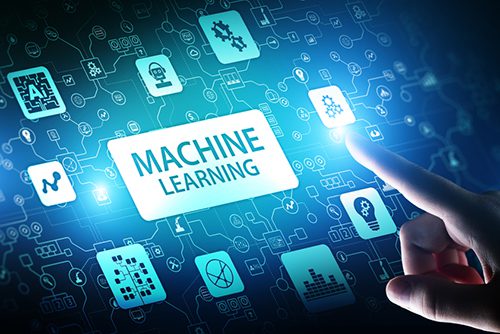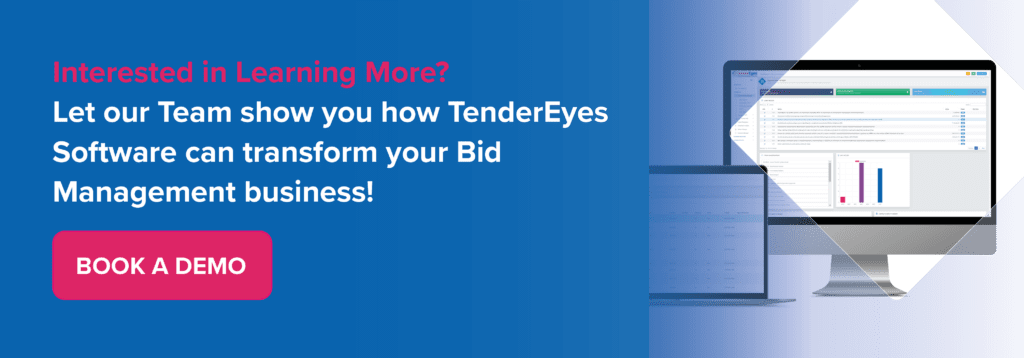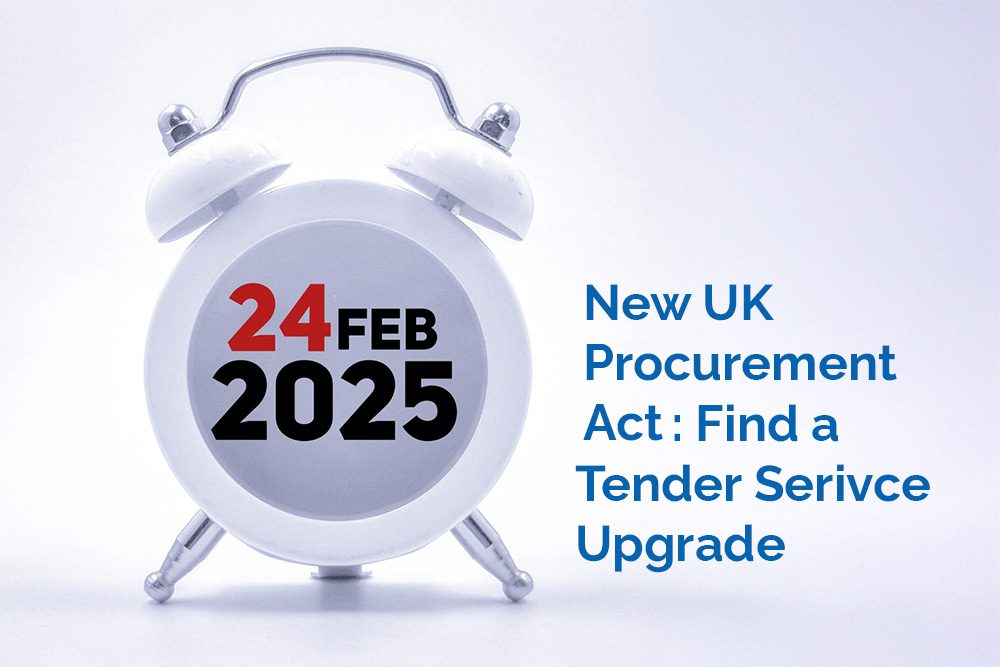Artificial Intelligence (AI) is currently grabbing the headlines! But what potential do these new technologies have in the tender management world and are they a good thing?
In this first of a two-part series, we look at the pros and cons of AI within business and its potential in the sourcing and completion of tender submissions. In part two, we will explore how TenderEyes is incorporating these new technologies within our software.
Before we delve into the subject let’s take a quick look at the evolution of Artificial Intelligence (AI) and its subsets Machine Learning (ML) and Deep Learning (DL).
The Evolution of Artificial Intelligence
The development of AI has been a fascinating journey that has transformed the way we interact with technology and the world around us.
- 1950s: The concept of Artificial Intelligence first emerged, with early systems rule-based and reliant on predefined sets of instructions to solve specific problems. However, as computing power increased and new algorithms were developed, the field of AI started to expand rapidly over the following decades.
- 1990s: Machine Learning gained prominence with the development of more sophisticated algorithms capable of learning from data. This marked a shift from explicitly programmed systems to models that could generalise from examples.
- 2000s: The advent of big data and advancements in computational resources further fuelled the growth of AI. Deep Learning, a subfield of machine learning, emerged as a powerful technique capable of processing massive amounts of data and achieving ground-breaking results in areas like computer vision and natural language processing.
- Future: AI holds immense potential as researchers and engineers continue to push the boundaries of what is possible, with the aim of creating intelligent systems that can solve complex problems, understand human language and behaviour and augment human capabilities in a variety of domains.
“The global artificial intelligence market size was valued at $428.00 billion in 2022 & is projected to grow from $515.31 billion in 2023 to $2,025.12 billion by 2030.” Fortune Business Insights
Artificial Intelligence in Tender Management
While basic AI technologies are already being incorporated within Enterprise Bid Management software, such as TenderEyes (look out for Part two next month), the use of more sophisticated AI is yet to be explored.
The following identifies both business benefits and risks associated with adopting AI technologies within the tender management sector.
Potential Benefits
1. Improve Efficiency & Productivity
Bidding for high value tenders requires coordination of multiple people, tasks and content. All within very tight deadlines. Project efficiency is, therefore, critical to submitting quality bids and winning business.
AI technologies have the potential to enhance the automation of time-consuming tender management tasks. This may include identifying relevant opportunities, analysing bid documentation, sending information requests and creating proposals. This can potentially save suppliers a significant amount of time and resources. Thus, allowing Bid Teams to focus on finessing responses and securing higher evaluation scores.
“64% of businesses believe that artificial intelligence will help increase their overall productivity.” Forbes Advisor Survey.

2. Assist in Content Creation
Answering the 100s of questions within an ITT (Invitation to Tender) requires the creation and management of vast amounts of content. This is a time-consuming activity requiring Bid Teams to collaborate with multiple Subject Mater Experts, who have their own job responsibilities and challenges.
Using AI tools to assist in the production of content could potentially offer several benefits, including:
- Auto-generation of foundation content. This will free up time for human creators to focus on more strategic and creative aspects of tender response completion.
- Improving the quality and consistency of content. AI has the capacity to analyse and learn from vast amounts of data. Successful content and patterns can be easily identified and responses generated, that better align with tender evaluation criteria and requirements.
- Assisting in content discovery and optimization. AI-powered analytics tools can provide valuable insights into content performance, enabling data-driven decision-making and continuous improvement.
However, it will be important to strike a balance between AI-generated content and human creativity and judgement to ensure authenticity and quality of responses.

3. Increase Accuracy
Any tender submission will include a wide scope of business information. This will include confidential and sensitive intelligence, such as pricing, financials, competitive differentiation etc.
When tender responses are hastily crafted without thorough content verification and approval, there is a significant likelihood of including inaccurate or outdated information in submissions. This exposes the business to potential risks in terms of brand reputation and financial implications.
AI has the potential to assist in:
- Proofreading and editing
- Reduce human errors
- Improve and increase content accuracy
- Ensure adherence to the approval process.
4. Better Insights
With Bid Teams under pressure and often responding to multiple or consecutive tenders, limited time is available to review and analyse results. This means opportunities may be missed to gain insight and learning.
For example, AI could be used to better monitor ongoing projects and more easily and quickly alert the Bid Team to any roadblocks or issues that need to be resolved. This will help ensure tasks are completed and tenders submitted on time.
AI can also analyse historical data to identify which types of tenders are most likely to be successful, which competitors are most active in the market, and what pricing strategies are most effective. This can help suppliers make more informed decisions about which tenders to pursue and how to structure their bids.
5. Competitive Advantage
Bidding for high value contracts is an extremely competitive activity. Suppliers that understand their competitors and emphasis differentiation in their tender responses will secure higher evaluation scores and win more business.
AI tools have the potential to effectively search, collate, analyse and regularly report on the competitor landscape. Making it easy and quicker to identify changing trends and contribute to competitor advantage.
Businesses that implement bid management best practices and employ the right technology, such as Bid Management software and AI tools, will also secure further competitive advantages.

Potential Risks
1. Prohibitive Costs
One of the biggest roadblocks to using AI in tender management will be cost. These technologies can be expensive to implement and maintain, particularly for smaller businesses.
Ongoing investment in up-to-date hardware and software, securing AI expertise, staff training, governance and risk management will all need to be accounted for.
This may make it difficult for some business to compete with larger, more established companies that have the resources to invest in these technologies.
2. Impact on Employee Motivation
The introduction of AI can also impact employees’ motivation. Some employees may worry about job security, while many will see their job roles and responsibilities change. There is the potential also that employees become reliant on AI and loose key cognitive and problem-solving skills.
Organizations will need to address these concerns by providing transparent communication and upskilling initiatives. This will create a supportive environment to help employees adapt and thrive in the AI-driven workplace of the future.
“A shift in the division of labour between humans and machines could displace an estimated 85 million jobs by 2025, while giving rise to 97 million new roles.” WEF Report.
3. Lack of Human Creativity
While AI technologies can automate many tasks and learn over time with pre-fed data and past experiences, it cannot replicate the creativity and problem-solving skills of a human.
This could lead to bids that are technically accurate but lack the strategic insights and innovation that can set a supplier apart from its competitors.

4. Dependent on Data
AI is only as good as the design and set up of its algorithms and the data they access and learn from. Without regular review and updating of both algorithms and data, AI outcomes and responses will remain the same. AI cannot think outside the box like humans and therefore lacks forward thinking ingenuity.
Also, any inaccuracies in either the algorithms and data with be reflected in the AI generated outcomes which could lead to suppliers missing out on opportunities or making suboptimal decisions based on flawed data.
5. Governance and Security
Finally, using AI in tender management could raise security concerns. These technologies may require access to sensitive data, such as financial information and intellectual property. If this data is not properly secured, it could be vulnerable to cyber attacks or other security breaches.
Governance on the use of AI tools will also need to be carefully managed. There is already a proliferation of free AI tools readily available. These could easily be adopted independently by employees, without them fully understand the implications and risks associated with their use.
Conclusion
As with most things, there are both pros and cons to using sophisticated AI tools in the sourcing and management of tender submissions.
While these technologies can improve efficiency, accuracy, and insights, they can also be expensive, lack human input, creativity and innovation.
There are still many lessons to be learned as early adopters test the application of AI in different business scenarios.
Certainly, those bidding for contracts will need to carefully consider the financial and resource implications. And most importantly ensure sophisticated AI tools enhance and not hinder their future tender success.
Look out for next month’s blog where we explore the AI tools already available within TenderEyes Bid Management Software!








